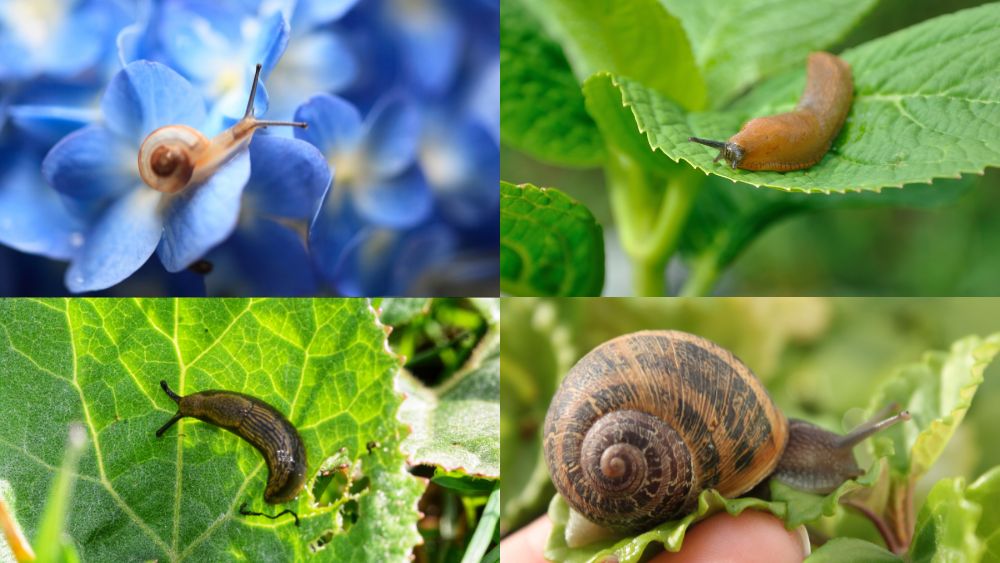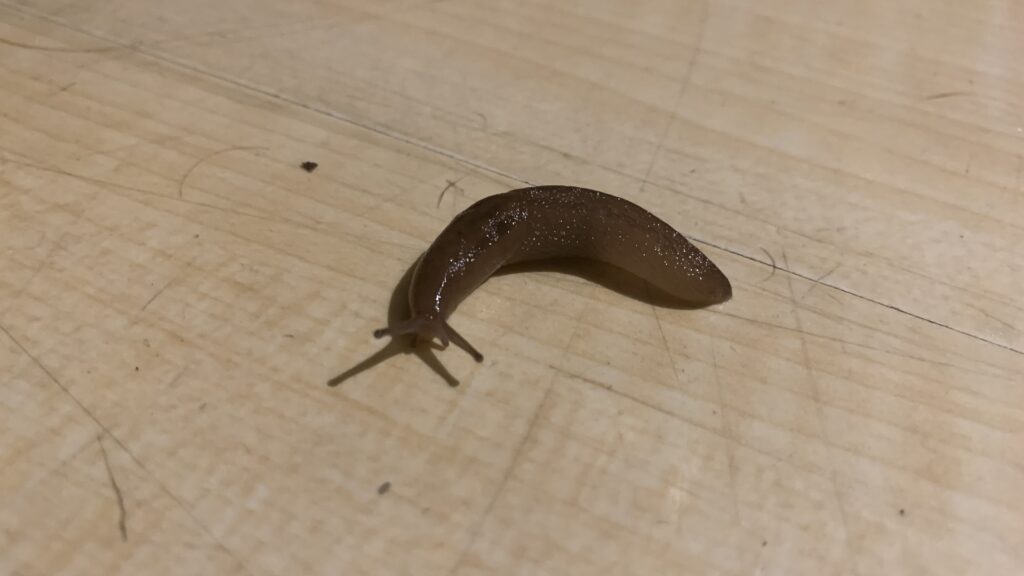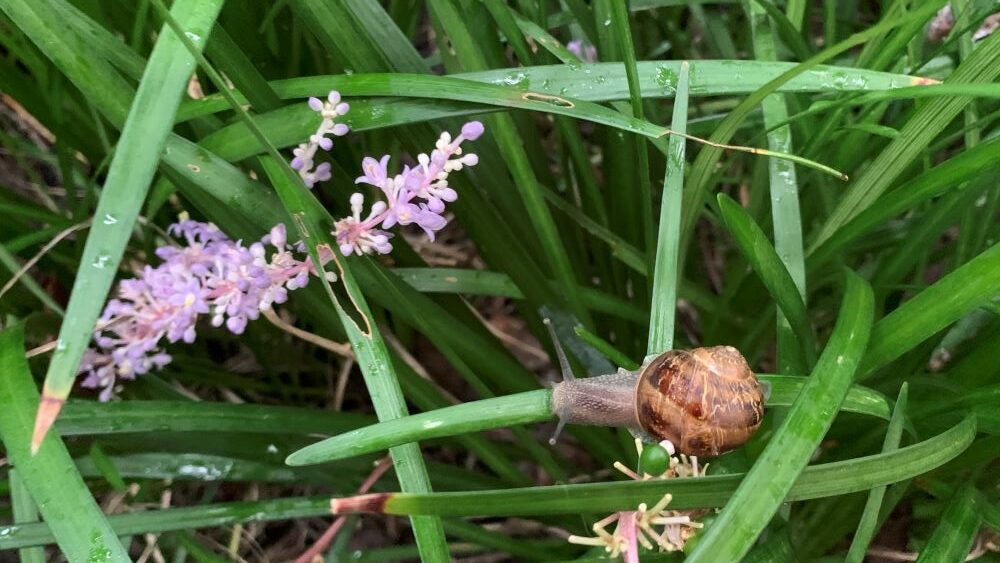Some people believe that snails and slugs are the same thing, but if that’s true, why do snails have shells but not slugs? Slugs have evolved more than snails and have learned how to survive without them.
This article will explore 5 differences between slugs and snails, why snails have shells and slugs don’t and the benefits of slugs and snails for your garden.

5 Differences Between Snails and Slugs
If you’re curious about how to tell the difference between snails and slugs, here are a few ways to determine this difference:
1. Shells vs. No Shells
Snails have a shell that is attached to them and therefore is always there. Most slugs have small shells, but they are inside of their bodies and therefore unseen. The other types of slugs have no shells at all.

2. Sleep and Activity Patterns
Both snails and slugs sleep during the day and come out at night. They both love to hide, but slugs can hide in smaller places, such as under boards, logs, containers, and ground cover. Snails hide in damp places such as window sills, planters, and more.
3. Moisture Needs
Both snails and slugs need moisture or their bodies will dry up and they’ll die. The difference is that, when snails need moisture they’ll climb up trees to find moisture. Slugs will bury themselves in the soil instead.
4. Body Characteristics
Both snails and slugs have mucus on their bodies, but snails are more flexible and agile. This is because slugs’ internal organs are inside of their bodies, which makes it harder to be flexible. Snails store their organs in their shells, so they can move around a lot more easily.
5. The Color of the Animal
Snails are usually some shade of gray and have shells that are usually brown but which can be colors such as blue, black, silver, or even red. Their shells can also be either speckled or striped. Slugs’ bodies are usually black, gray, orange, or yellow.

Are Snails Just Slugs With Shells?
The truth is, snails and slugs are two different creatures. Snails are gastropods with shells and come in different types, including land, freshwater, and saltwater snails
Slugs are also gastropods but are either land or sea slugs. Most slugs are land-based and have soft bodies.
Snails and slugs have evolved differently, so even if you remove the shell from a snail, it doesn’t become a slug. It is just a snail that is now dead.
Why Snails Have Shells
There is only one reason why snails have shells: the shells keep them safe. Snails have no skeletal systems and very soft bodies, and they would be very easy to destroy if they had no shells for protection.
Even better, these shells are attached to their bodies so they have a home of their own 24 hours a day, seven days a week. When they’re in trouble, snails can retreat into their shells until they are out of danger and can come out again.
Can a Slug Turn Into a Snail?
Oddly enough, there are certain types of slugs that can turn into snails. Land snails are also known as common snails, and when they mate with another snail species, they can turn into a snail.
This is because certain slugs have both male and female parts, and a process called heterophylly allows slugs to turn into snails in certain circumstances.
Do Slugs Serve a Purpose?
Slugs and snails help keep the balance of the environment, but they do much more than that. They do not damage grass and can clean up any dead debris in your garden.
They consume algae when placed in aquariums to keep fish healthy and they even act as a food source for birds and any other creatures that can pollinate flowers. They even have slime on their bodies, which is also good for your skin.
While some people consider slugs and snails pests, they do serve an important purpose. Birds even use the calcium in the snails’ shells to help form their own eggs.
Most importantly, snails and slugs do a great job of getting rid of all the debris in your garden so it stays cleaner and healthier.
4 Benefits of Snails and Slugs for Your Garden
Snails and slugs love to eat decaying matter and other debris in and around your garden, but they offer other advantages as well. Some of these include:
1. They Eat Small Invertebrates
Small invertebrates can wreak havoc on your garden because they overpopulate quickly. When snails and slugs eat these invertebrates, their population is reduced and they are not nearly as much of a nuisance. This is also the reason snails and slugs are good ecologically.
2. Their Feces Are Good for the Soil
Snails and slugs have feces that are good for your soil. It enriches the soil and makes it the perfect compost if you decide to use it that way at some point. This feces creates soil that is filled with vitamins and other nutrients so the end result is a healthier garden.
3. They Are a Good Source of Calcium
The reason snails’ shells form correctly is because of the calcium that they eat, and this calcium also makes your garden soil a lot healthier. Whatever you’re planting in your garden, this calcium can help it grow strong and healthy.
Calcium is just one of the minerals that keeps soil healthy, and snails don’t mind sharing some of their calcium with your garden soil.
4. They Aerate the Soil
Snails and slugs also aerate the soil, which keeps it healthy. In fact, when you consider all of the advantages that snails and slugs provide to your garden, the condition of the soil seems to benefit more than anything else.
When your soil is healthy, whatever you plant there will also be healthy, and slugs and snails do a great job of keeping your garden soil healthy.
Conclusion
While snails and slugs have many similarities, they are in fact two different animals. Snails always have shells while many slugs do not, at least not external shells. But both can be very beneficial when you have them in your garden.
I am an accredited practicing dietitian, experienced gardener and a dedicated cook. I love writing and sharing my experience so you can learn from my successes and mistakes.
